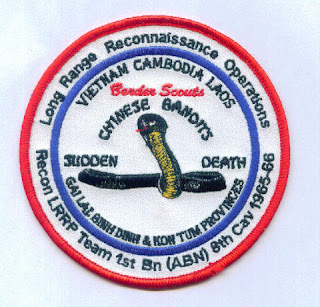Carlos R Hatcher, Chinese Bandit 13 Rear Security 1965-66

Carlos R Hatcher, Chinese Bandit 13 Rear Security 1965-66 By Ranger Conners, Chinese Bandit 13 In February 1965 the US Airbase located outside of Pleiku had been attacked resulting in American casualties and additional US troops were assigned to improve security at the base. During the Battle of the Ia Drang Oct-Nov 1965, the Chinese Bandit 13 reconnaissance scout squad of the Chinese Bandit Recon Platoon patrolled the wooded areas around the tea plantations surrounding Pleiku…a large NVA attack was expected at Pleiku but did not materialize, however the security of the area remained a concern and the Jumping Mustangs 1 st Bn (ABN) 8 th Cav deployed to the hills above the large lake north of the city in December. All three Chinese Bandits recon scout squads conducted patrolling around the assembled battalion bivouac site and the Montagnard village located on the far side of the lake. During this period the Jumping Mustang Battalion conducted parachute


